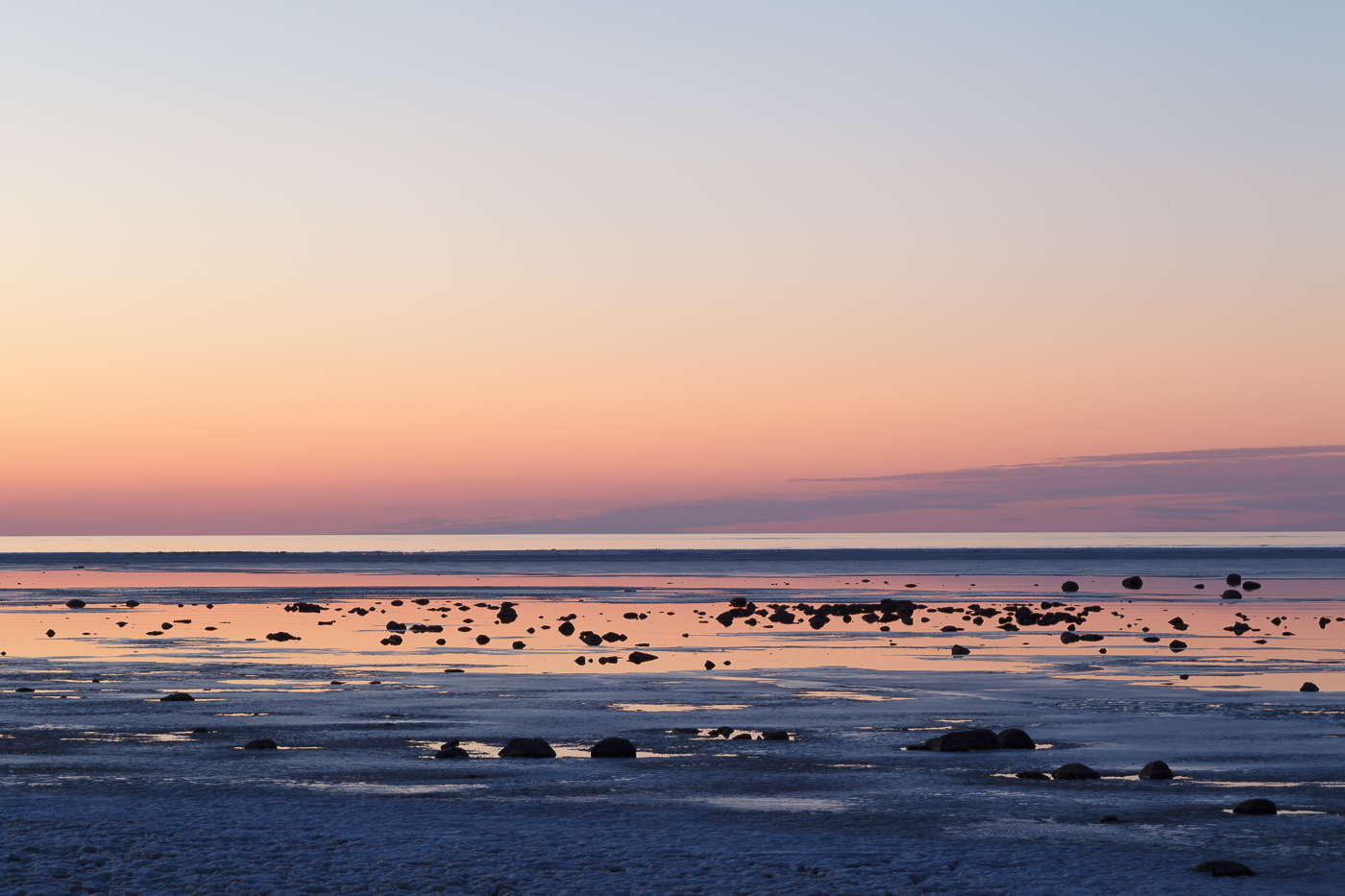Morning and evening light are usually the most striking but in winter it's possible to get lovely images even at mid-day. Winter light is softer, more delicate, less contrasty. My son was visiting and he wanted to get out and take some photographs so we headed out just after lunch. That's not a time I'd normally think to get out with my camera but I was pleasantly surprised. Our first shots were of thin ice on the lake that I found quite striking.
Ice and Snow-Covered Rocks on Lake Huron
At the Edge of the Lake
We travelled on to Sarnia, stopping in Bright's Grove to see what the lake looked like from there. Lots of moving floes of ice along the shore, and a nice contrast between the sky, water and trees.
Lake Huron through the Trees
From there on to Sarnia to see the ice moving from Lake Huron into the mouth of the St. Clair River. The river flow is fast and the ice moves quickly. The lighthouse and buildings on the American side of the river provide an interesting background.
Ice on the River
And then back to where we started to see how the light might have changed in the late afternoon. We liked what we saw and stayed until sunset.
It was definitely getting colder but the light was changing all the time. So we stayed and got lovely sunset light hitting the trees, the two at the edge of the lake and the cluster a little further out.
A great time enjoying the beauty we found everywhere. Hours slipped by as we got lost in looking, seeking out images we thought were interesting, and then setting up our cameras to get what we hoped would capture what we felt and saw. A lovely day with my son Scott - energizing and restorative.













